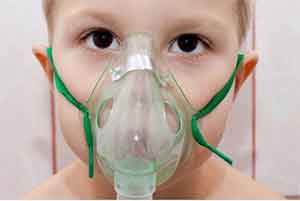Head to Head Trial Challenges AAP Guidelines for Treating Bronchiolitis
Study Published in Pediatrics Determined No Difference in Treatment Efficacy of Common and Costly Illness
 With no proven therapies effective beyond supportive care, a team of clinician researchers at the Children’s Hospital at Montefiore (CHAM) sought to test the superiority of three percent (3 %) Hypertonic Saline (HS) as compared to normal saline (NS), in reducing the length of in-patient hospital stay (LOS) and frequency of readmission rates for infants with bronchiolitis. Their research published online in Pediatrics, shows statistical parity of the two forms of supportive care, contradicting earlier research and guidelines issued in 2014 by the American Academy of Pediatrics (AAP) around the recommended use of HS in treating bronchiolitis, particularly for those hospitalized for under three days.
With no proven therapies effective beyond supportive care, a team of clinician researchers at the Children’s Hospital at Montefiore (CHAM) sought to test the superiority of three percent (3 %) Hypertonic Saline (HS) as compared to normal saline (NS), in reducing the length of in-patient hospital stay (LOS) and frequency of readmission rates for infants with bronchiolitis. Their research published online in Pediatrics, shows statistical parity of the two forms of supportive care, contradicting earlier research and guidelines issued in 2014 by the American Academy of Pediatrics (AAP) around the recommended use of HS in treating bronchiolitis, particularly for those hospitalized for under three days.
According to the study team, led by Alyssa H. Silver, M.D. and Katherine M. O’Connor, M.D., both pediatric hospitalists at CHAM and assistant professors of pediatrics, Albert Einstein School of Medicine, these findings do not support the routine use of HS alone in treating infants hospitalized with bronchiolitis as compared with NS.
“This study was prompted by both the unmet need in effective treatments for bronchiolitis and ongoing discussions in the U.S. pediatric community about the perceived superiority of 3% percent HS for in-patient care,” said Dr. Silver. “We hope our findings prompt more attention to minimizing bothersome interventions without clinical benefit, thus also decreasing hospitalization costs and unnecessary resource utilization. We especially want to thank and acknowledge the families and their babies who participated in this important research.”
Bronchiolitis, usually due to a viral infection, causes swelling and mucus buildup in the smallest air passages in the lungs (bronchioles). It is common and can be a severe illness, primarily affecting babies under the age of two years. Symptoms can include cough, nasal congestion, wheezing and difficulty breathing. Previous studies suggest little benefit from treatment interventions including bronchodilators, antibiotics or steroids.
The study assessed 765 patients under the age of 12 months for eligibility and enrolled 227 subjects of which 190 completed the study (HS=93 patients; NS=97 patients). In keeping with the 2006 AAP definition of bronchiolitis, patients with previous wheeze were included in the study. Results showed no difference in LOS between the HS and NS groups (median LOS in both was 2.1 days). Likewise, there were no differences in readmission rates or adverse events between the two groups.
Given the volume of patients within the Montefiore community who may present with respiratory distress, Dr. Silver and her colleagues at CHAM have developed clinical pathways of care for babies with bronchiolitis who or whose families seek medical care at the Emergency Department (ED). The clinical pathways are designed to efficiently and frequently assess the infant’s Respiratory Score to gauge necessary intervention, admission (floor or Pediatric Critical Care Unit), or discharge to a reliable parent/caregiver for care and monitoring.
Source Newsroom: Montefiore Medical Center
Citations
Pediatrics

